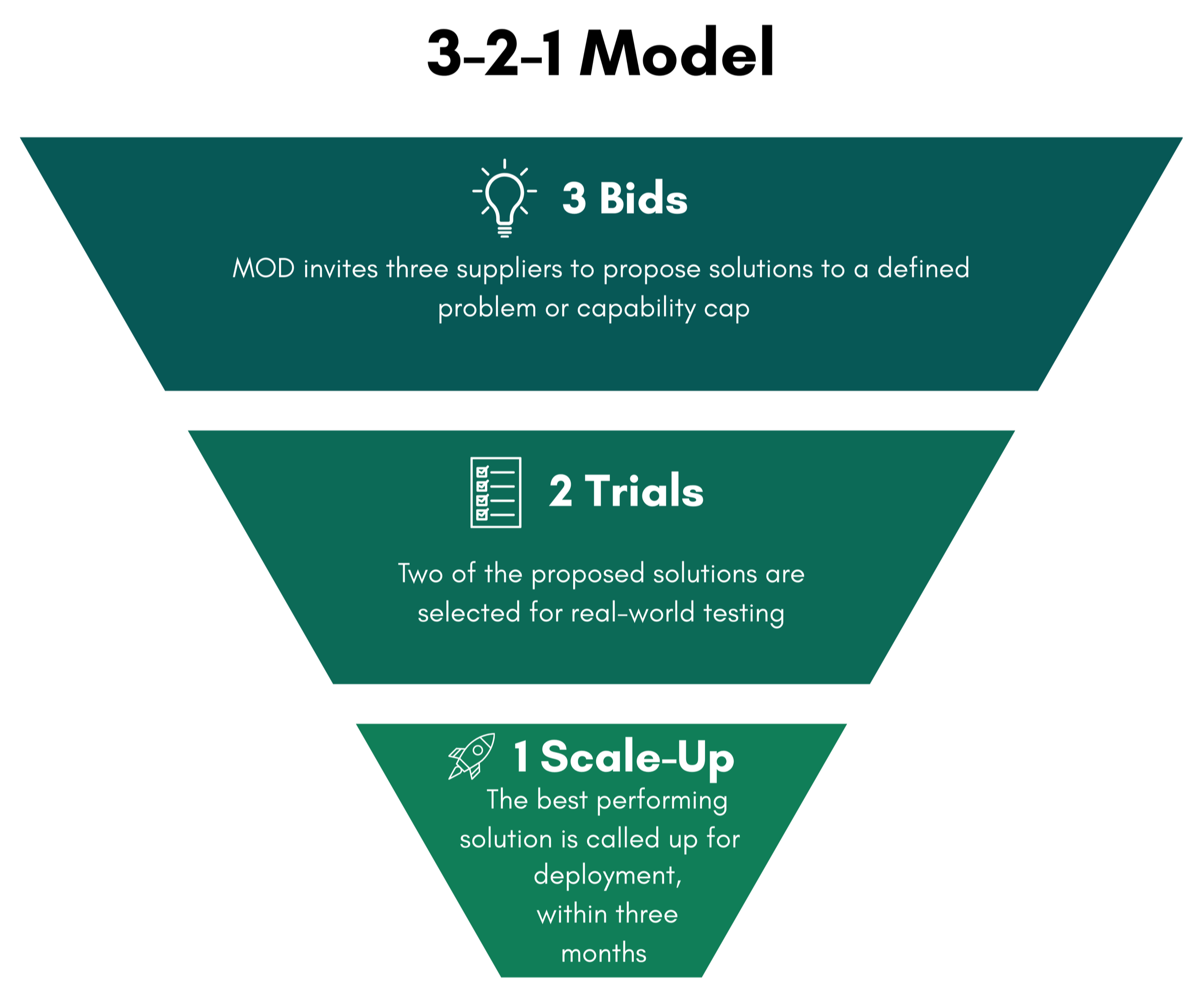Unlocking Innovation: SMEs and the Future of UK Defence
As global tensions rise and the era of the ‘peace dividend’ draws to a close, the UK faces a pivotal moment in shaping its defence strategy. This blog explores how the UK is responding to renewed great-power competition and shifting geopolitical dynamics, including its commitment to increase defence and security spending to 5% of GDP by 2035 [1]. It examines the implications of this historic shift, the outcomes of the Strategic Defence Review, and the critical role of SMEs in delivering national defence priorities.
A National Endeavour
In July 2024, the government commissioned a Strategic Defence Review (SDR) to address the rapidly evolving global threat. The SDR’s key recommendation was to prioritise the operation, sustainment, and renewal of the UK’s nuclear deterrent. In response, the government has committed £15 billion to the nuclear warhead programme [2].
Given the backdrop of slow-moving economic growth, defence spending could also serve as a driver of economic prosperity, job creation, innovation and industrial capability across the UK. To this end, the SDR advocates for the involvement of Small Medium Enterprises (SMEs) to develop the advanced technologies required for the nuclear deterrent. The Sectary of State for Defence has endorsed this approach, framing the delivery of the deterrent as a ‘national endeavour’ [3].
Barriers to Entry
However, SMEs are often unable to access public defence contracts.
In the financial year 2023/24, the Ministry of Defence (MOD) spent approximately £1.3 billion on SMEs through public procurement. This represented only 4% of the MOD’s total direct expenditure within UK industry and commerce [4].
Defence procurement processes can be seen as convoluted, resource-intensive and require specialist knowledge to navigate. SMEs must meet stringent accreditation and vetting standards, which are costly and time-consuming.
Moreover, the lengthy duration of tender processes, often spanning several years, discourages SMEs, as the innovative technologies they develop may lose their competitive edge by the time contracts are awarded.
Extended tender processes also run in direct conflict with the MOD’s annual budget cycles. For example, if funding is ringfenced for the same financial year that the tender begins, but the process takes over 12 months, the result is an immediate underspend. This misalignment could foster counterproductive behaviours and make governance appear obstructive to programmes rather than supportive.
A Way Forward
Despite this, we should not underestimate the potential of the new Procurement Act 2023, introduced by the government in February 2025.
The Procurement Act 2023 replaced the Defence and Security Public Contracts Regulations 2011 (DSPCR) with a consolidated framework that applies to all public procurement, including defence. This simplification reduces the complexity SMEs face when navigating procurement rules.
Defence authorities can now make direct awards under specific conditions, such as maintaining operational readiness or responding to technological developments. In addition, larger contract requirements can be divided into smaller lots. This can benefit SMEs by reducing the need for lengthy competitive processes, and providing more opportunities for participation.
The standstill period for procurement challenges has also been reduced to eight working days, minimising delays for SMEs seeking to secure contracts.
The electronic procurement tool Dynamic Markets (DM), also introduced as part of the Procurement Act 2023, allows SMEs to apply at any time, removing the barrier of fixed application windows. In addition, DM typically involves pre-qualification checks rather than full tender submissions, lowering the administrative burden for SMEs. DM does not charge any fees for joining.
The MOD are also attempting to reduce the time-to-market and fast-track defence solutions through the implementation of the ‘3-2-1 Model’:
3 Bids: MOD invites three suppliers to propose solutions to a defined problem or capability cap
2 Trials: Two of the proposed solutions are selected for real-world testing
1 Scale-Up: The best performing solution is called up for deployment, within three months
How Deecon Can Help
With proven expertise in procurement, Whitehall governance and commercial delivery, Deecon offers outcome-focused support across the defence procurement lifecycle. Our flat structure and SME status enables swift decision-making, helping our clients to respond quickly to evolving needs.
We design procurement strategies that contract for outcomes, not just requirements, reducing integration risks and driving delivery. Our deep understanding of Cabinet Office governance allows us to guide client organisations through complex processes with confidence and clarity.
In a budget-constrained environment, Deecon has supported the Defence sector to build value-for-money frameworks that align KPIs, interrogate cost models and negotiate fair, risk-balanced contracts.
For SMEs, we offer strategic insight and commercial guidance to strengthen bids, scale delivery and unlock innovation.
References
Words by Euan Merrilees
Edited by Anna Pringle
All imagery has been reproduced from defence imagery website under the terms of the Open Government Licence and is subject to Crown Copyright.


